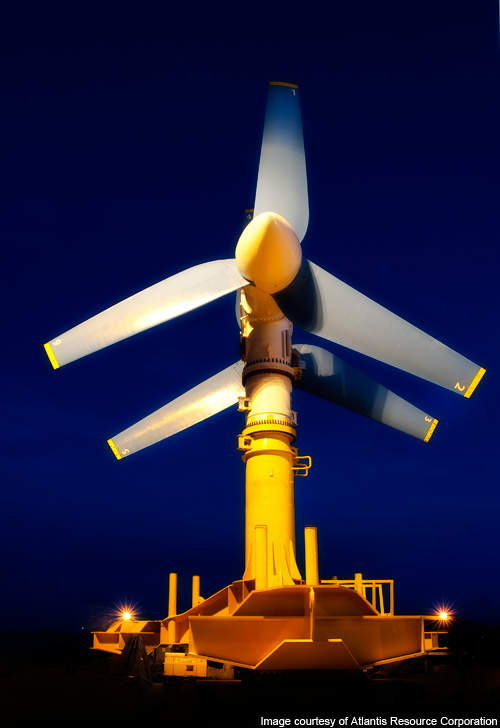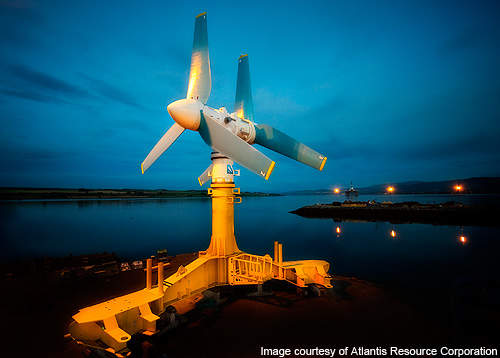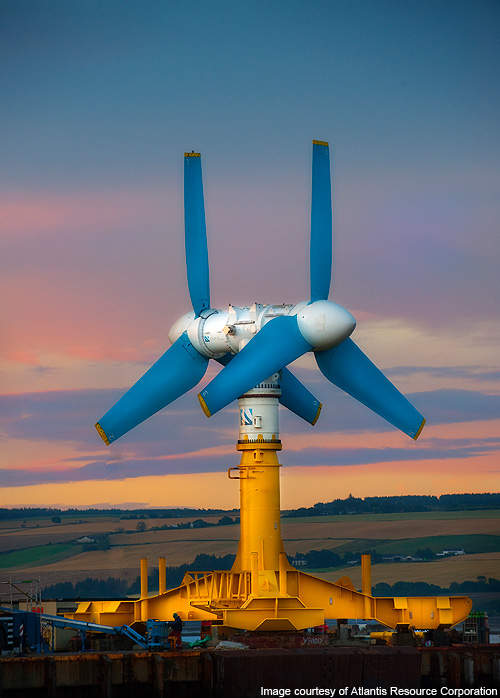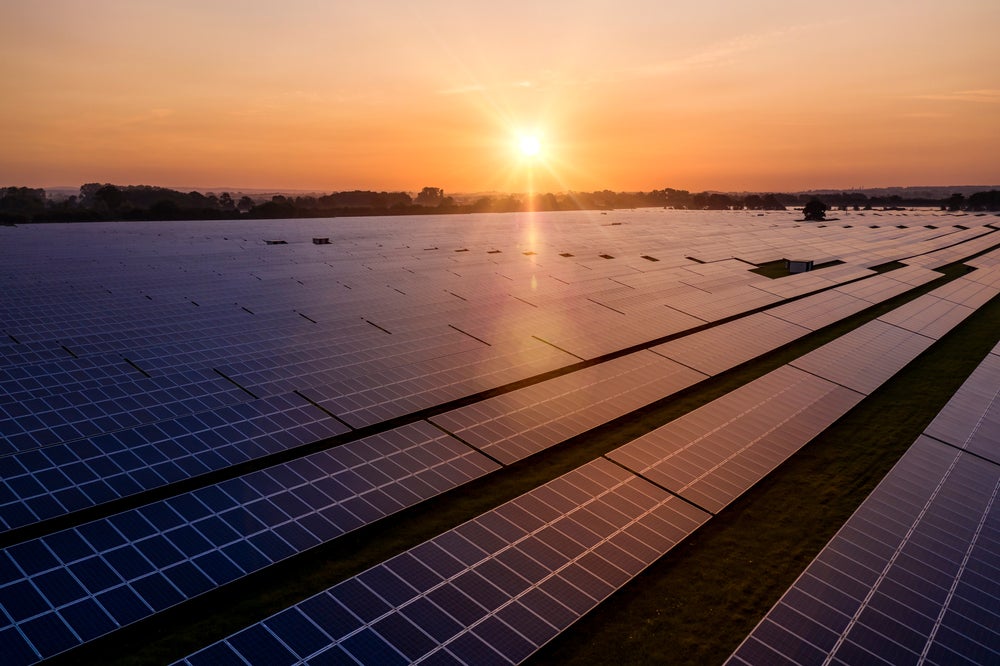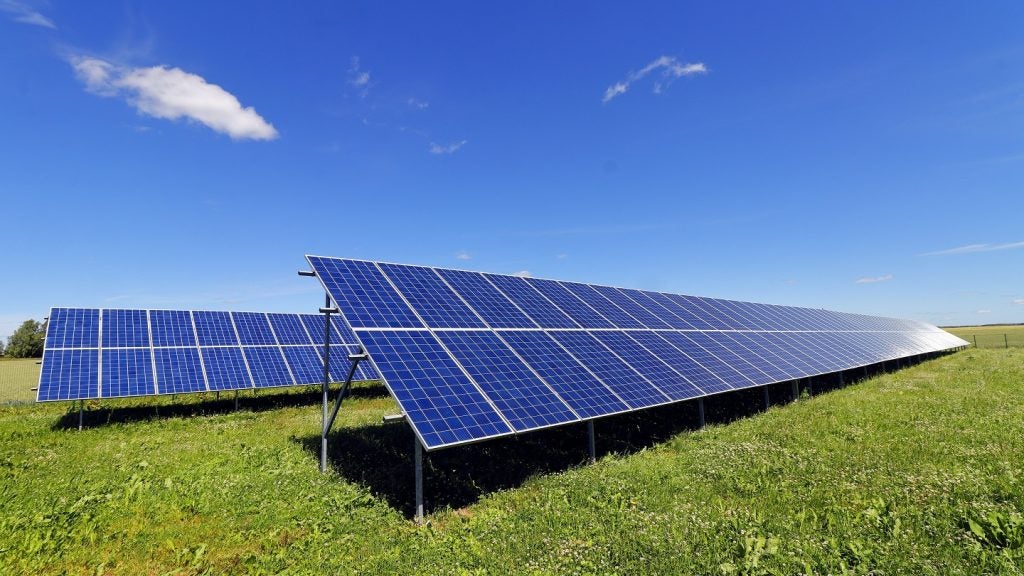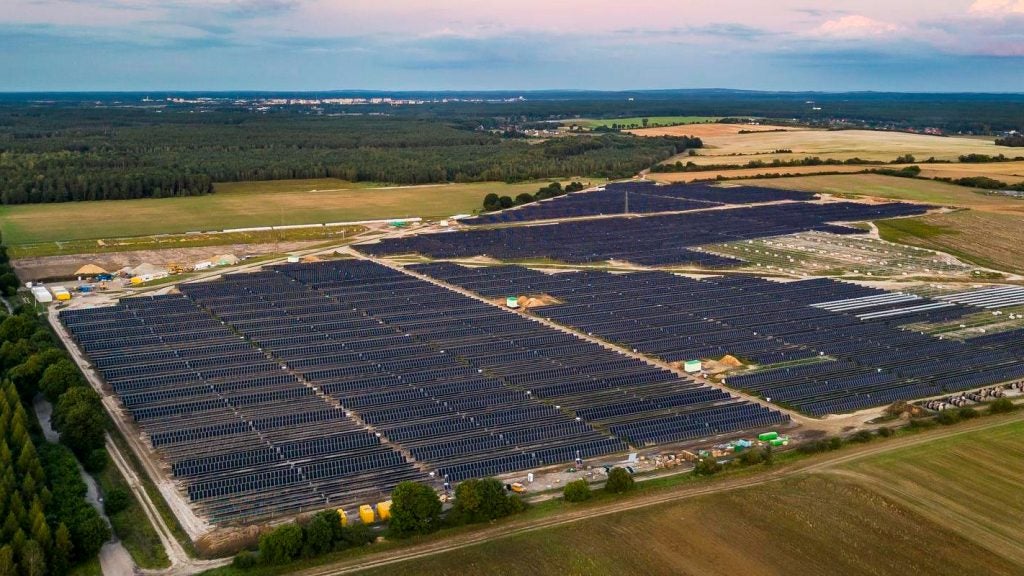Atlantis Resource Corporation redeployed the AK-1000 tidal turbine at the European Marine Energy Centre (EMEC) in Orkney, Scotland, in August 2011. The turbine will undergo tests for two years and will then be deployed on a large scale in Pentland Firth.
The breakthrough technology, which was originally slated to be commissioned in August 2010, got delayed due to a manufacturing defect in the turbine blades.
The turbine is deployed in the seabed and stands 73ft tall. The simple and robust turbine weighs around 1,300t. It is the largest and most powerful tidal power turbine in the world. A horizontal axis turbine, it is effective in water current speeds exceeding 2.6m.
The AK-1000 is designed to subsist in harsh weathers and rough, open ocean environments. It has the capacity to generate 1MW of electrical power from a renewable energy source. The turbine is 22.5m high and can provide electricity to more than 1,000 homes.
Two sets of blades are fitted on a single unit of the AK-1000 tidal turbine to tackle reflux and flood tides. The diameter of each blade is 18m, and they rotate slowly at a rate of six to eight revolutions a minute, resulting in zero environmental impact.
Finances behind the AK-1000 tidal turbine project
Atlantis Resource Corporation invested approximately $25m to design, build and test the tidal turbine, raising $14m funds for its development.
Statkraft joined as a new partner and lead share investor in Atlantis by investing $8m in March 2009. Morgan Stanley has also been a shareholder in the company since 2007, acting as a financial adviser to Atlantis.
AK-1000 technology and science
The AK-1000 turbine is designed based on development and tests of the earlier two rotor AK-1000 turbines deployed at Orkney.
The AK-1000 tidal turbine absorbs energy from the high tide produced by the gravitational pull of the moon. Ocean currents are 832 times denser than air and can be easily stored with a small device, compared to that of wind energy.
The tidal turbine absorbs the kinetic energy in ocean currents and transmits it into renewable electricity. Tidal energy is a vast source of energy, as oceans cover more than 70% of the earth’s surface. It is predicted that about 50,000MW or 180TWh of electricity a year can be generated through tidal energy worldwide.
Development of the Scottish AK-1000 tidal turbine project
The AK-1000 is Atlantis’s first commercial scale grid connected project. Tempco of Singapore was responsible for manufacturing the turbine blades.
Scottish power market details and potential
Scotland produces around 48,000GWh power annually, mostly through coal. The remainder is produced from gas and oil, nuclear power and renewable sources.
There has been an 18% increase in renewable energy since 2006, most of it coming from non-hydro inexhaustible sources, such as wind, wave, tidal, solar energy and thermal. The alleviation in the non-hydro sources has been significant, rising from 0.6% in 2000 to 7.4% in 2007.
Scotland intends to produce 50% of its electricity from inexhaustible sources by 2020, which is equivalent to an increase of 500% in wind and tidal farms. About half a million homes in Scotland will use ocean energy by 2020.
The Scottish Government has now identified the huge potential of ocean energy. Out of the total renewable obligation certificates (ROC) approved in the UK market, three ROCs are confirmed for tidal current energy.
Wood Mackenzie, a research consultancy, stated electricity demands will alleviate by 10% by 2020 and around 80% of the inexhaustible electricity will be provided by onshore wind farms. Marine, biomass and hydro energy will grow at a tenth of the rate of the new wind energy. About 15% of the total power requirements of UK can be met through ocean power potential.

